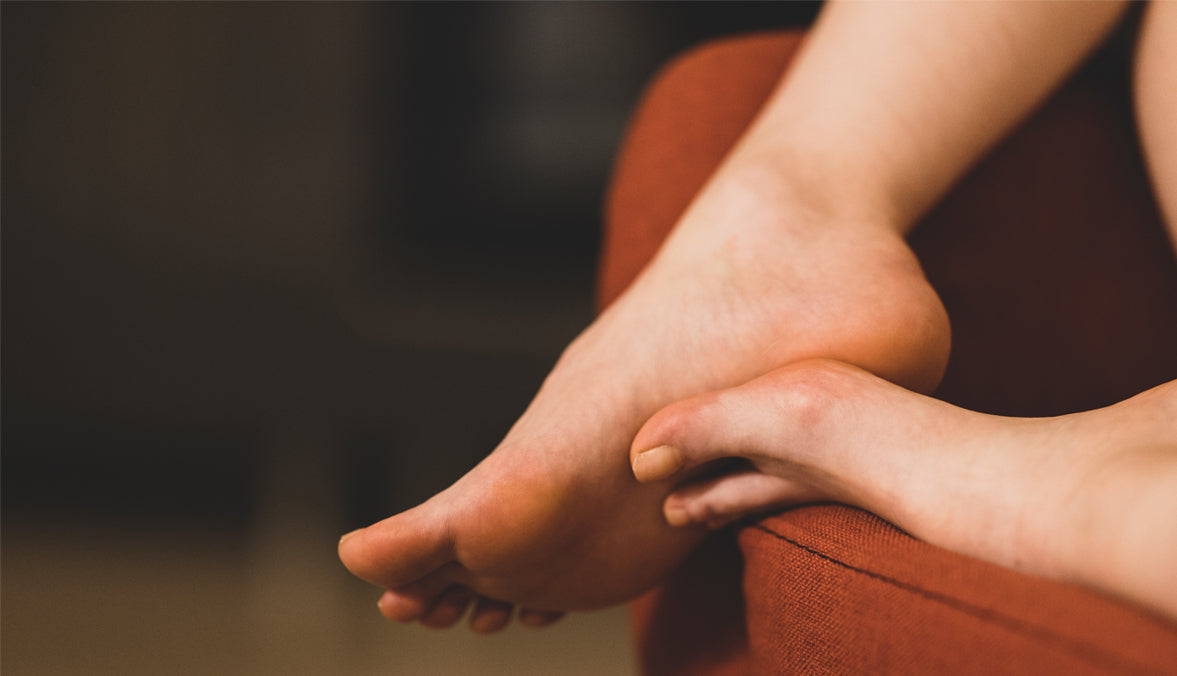
How to get rid of plantar fasciitis pain
Feeling discomfort or foot pain is a fairly common complaint with many different causes. Excessive physical activity, poor stride, improper footwear, or disorders such as plantar fasciitis may be behind the scene. Today we show you some ways to reduce plantar fasciitis pain.
Plantar Fasciitis
Plantar fasciitis is one of the most common causes of heel pain. It involves inflammation of a thick band of tissue that runs across the sole of the foot and connects the heel bone to the toes (plantar fascia). When this tissue becomes swollen, it is called plantar fasciitis.
Plantar fasciitis commonly causes sharp pain that usually appears with the first few steps in the morning. After you get up and move around, the pain usually decreases, but it may reappear after standing for long periods of time or when you stand up after sitting.
Restore your wellness the easy way
- Massage your feet
Keep a golf ball or tennis ball in your purse, desk, or drawer at home for an inexpensive and effective massage tool to provide comfort and pain relief throughout the day.
Use the ball while sitting at your desk, or take a quick break from standing to roll the ball under your foot while applying steady pressure. Don't shy away from "hot spots" of pain.
When you reach a sensitive area, apply steady pressure (without causing sharp or intense pain) for several seconds before continuing to roll the ball.
The pressure from this massage distracts the brain's pain receptors, sends blood flow to the arch and heel, and breaks up painful adhesions (poorly healed tears) of the plantar fascia ligament.
For extra relief, put the ball in the freezer at the beginning of the day for soothing cold therapy.
Also you may use our Imperial Feet Magnesium Oil preferably before you go to bed and in the morning. Take the experience to a spa level!
Though many studies demonstrate the efficacy of massage is a little weak, there is no lack of anecdotal evidence. Several smaller studies, including one published in the Journal of Acupuncture and Meridian Studies, show a marked decrease in pain with self-massage.
- Roll your feet with a water bottle.
You probably have a bottle of water on your desk at work, in your kitchen at home or on your bedside table. With this simple remedy, it can become a great tool for treating plantar fasciitis.
Simply sit in a chair and roll the water bottle between your heel and toe ten times, then switch sides. Apply constant pressure, but never to the point of pain. For greater healing and relief, freeze it before use.
- Contrast bath.
It is ideal to improve blood flow in the area and relieve foot pain:
- Wet your legs with shower water, first with warm water and always in an upward direction, in other words, from the feet and ankles towards the knees.
- Then do the same but with cold water.
- The massage from the shower's pressurized water and the change in temperature will improve the return circulation, providing rest and relief to legs and feet.
-
Apply Imperial Feet Footbath Oil its special formula with lavender and pine needle oil is designed to increase blood flow.
- Bath with Foot and Leg gel
Fill a bucket with warm water and add a handful of coarse salt (salt that has a much larger grain than the common table salt).
While your feet are soaking, take the opportunity to make gentle movements that help relax your ankles and stretch the entire sole. Take your feet out of the water for a few seconds and apply Foot and Leg gel and enjoy an amazing smell based on ginseng, aloe vera and marigold.
- Apply cold compresses or ice
Especially if swelling is present, applying cold to the affected area can reduce and provide immediate relief. If the pain has its origin in a slight twist or a small crack, wrap some ice cubes in a clean cloth and pass it all over the foot, sole included, with gentle pressure.
Considerations
Plantar fasciitis is one of the most common causes of heel pain. If heel pain is preventing you from being as active as you want to be, it's time to take action.
Start by investing in the right footwear, applying contrast baths and stretching like the bottle exercise throughout the day. But if nothing seems to be working, make an appointment with a podiatrist. They can help you get back on your feet.











